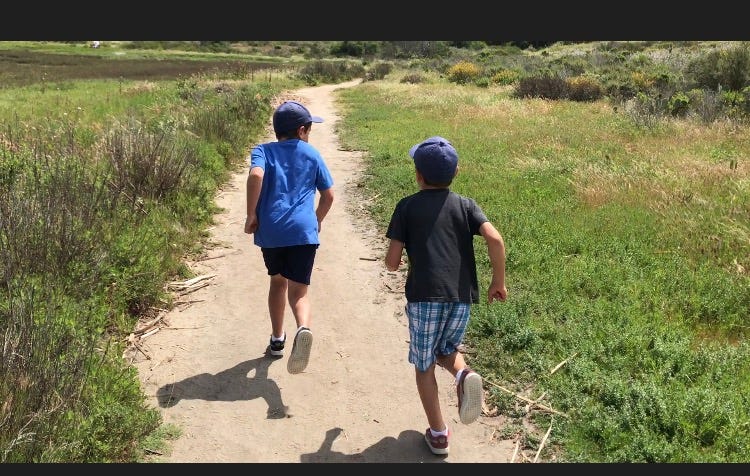
I recently wrote a piece about how hard it is to sit “idle,” because in today’s world, most of us are screen-obsessed in the office, at home and even on vacation (yes, those honeymoon photos, but are they necessary?) When I grew up (and likely the same for most of you reading), we did not have cell phones and it was a pretty low tech world, and yet, we are now fairly high tech parents using apps and technology to schedule our days, do our groceries, send photos and communicate with just about everyone.
When it comes to raising our kids, technology is a hot topic. Personally, I try to find a balance between teaching my boys be tech savvy, meanwhile emphasizing face to face communication, reading “real” books, keeping them outdoors and active and most important, teaching them mindfulness, or from a parenting standpoint, to not be so distracted by everything on screens these days. Beyond technology, there are other factors that have helped my husband and I raise fairly active, healthy and mindful children. Aside from feeding them vegetables, some key strategies that have helped my husband and I raise healthier, active and more mindful children are below:
1) Be a good role model. In the same way we teach kids good manners, we limit our time on the phones and completely put them aside at certain points of the day. For me, the hours between 7–8am (upon returning from the gym) are exclusively focused on my family with a goal to enjoy the morning school routine, have conversations together and get everyone out the door without rushing. We have a similar routine from 7–8pm at night where the focus is family, reading and winding down. When executed correctly, the lessons are to give yourself plenty of time to plan and enjoy these morning and evening routines, and by disconnected, the time tends to be high quality.
2) Teach them to meditate. Like me (who panics when my flight gets cancelled), my older son gets anxious about little things. Also like me (who drinks decaf coffee in the morning), he has a very high energy level. When he gets too wild or is having a tough time falling asleep, I teach him to take deep breaths and walk him through it. Alongside being active, I’m also a dedicated yogi, as mediation and yoga has brought terrific balance to my life and has enhanced my health. The ability to pass this learning along to your children is a gift. Some techniques for this here.
3) Play outside with them. Don’t just send your kids out to play, but when you have time, get physical with them! Kick the soccer ball, do some jumping jacks, ask them to lead an obstacle course or simply go for a hike or bike ride. These outdoor moments are magical because we’re exposed to nature, and off of our screens. This is way easier said than done because of our “busyness,” however, a 15 minute block of outdoor play, even if it’s right before dinner or over the weekend, is great for strengthening the bond with your children and encouraging healthy active lifestyles.
4) Be Where Your Feet Are. I use this mantra for myself almost every day and am slowly teaching my kids this principle. The idea is to be “present” in whatever you are doing. Be it a meeting, a workout, a book or a conversation with someone, “be where your feet are.” Don’t start thinking about something else or scanning your instagram feed while someone is talking to you.
5) Sing and Dance. You know the feeling you get when you’re in the car and start belting out to your favorite artist? It’s a good one, right? Studies have shown that singing releases endorphins, which is associated with a feeling of pleasure. One particular study suggested that ‘the pleasure we derive from listening to music results from its “innate connection to the basic social drives that create our interconnected world,’” a pleasure of singing together. Take some time, find music and artists that they enjoy and sing and dance together.

It’s inevitable that our children will increasingly rely on technology, as we do, but it’s important to ensure that we keep them active, healthy and also very in tune with looking people in the eye and appreciating face to face interaction. Most important, seek to make the experiences of making good choices as positive experiences, which will make them more likely to maintain these habits as they grow up.
